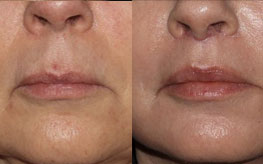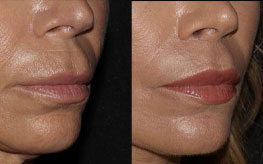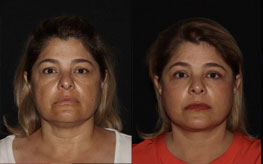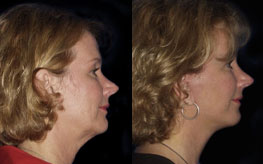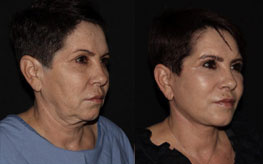Gynecomastia
Conveniently located to serve the areas of San Diego, CA

Gynecomastia is a medical condition that causes excess breast tissue growth in men and boys. The condition can develop at any age, but it most often arises during puberty. Though there is no one cause, genetics, obesity, and hormonal imbalances, and certain medications can be risk factors. While it can’t raise your risk of breast cancer, many men are extremely bothered by breast development and feel self-conscious about it.
If you are ready to transform your confidence levels with gynecomastia surgery, look no further than the experts at Alexander Plastic Surgery. With the knowledge and skill of plastic surgeons Dr. John Alexander and Dr. Jordan Kaplan, your aesthetic results and safety are our top priorities. During your consultation at our practice in San Diego, you will have the option to reduce breast tissue utilizing liposuction, excision, or a combination of both. Your surgeon will guide you based on your current anatomy and specific cosmetic concerns.
If you want to reach out to find out more about gynecomastia surgery, please call (858) 455-7557 or use our contact form to inquire about an appointment.
Contents
Causes of Gynecomastia
Gynecomastia is characterized by an abnormal amount of fibrous tissue, fat, and glandular breast tissue. Though men don’t have alveoli-the female breast structures that create and store milk- other breast tissues may be enlarged and give the chest a feminine appearance.
In a male body, having too much estrogen and not enough testosterone can result in drastic changes to the chest. Normally, at the start of puberty, boys experience an increase in estrogen that is canceled out by the dramatic rise in testosterone, allowing any residual breast tissue to atrophy, or shrink. By the time boys reach age 17, only approximately 10% will have some amount of breast enlargement due to an improper balance of hormones. (1)
Obesity is another factor in, but not a cause of, gynecomastia– however, research has found that it develops much more often in men with a higher BMI. This should not be confused with pseudogynecomastia, which is a similar condition where only excess fat builds up in the chest. It has also been proven that those with gynecomastia have higher blood sugar levels and its associated health risks; research demonstrated that it affects nearly one-third of the gynecomastia population. There is also evidence that a family history of diabetes and high blood pressure plays a role in the likelihood that a male will develop more breast tissue. (2)
Benefits of Gynecomastia Surgery
For mild cases of gynecomastia, a specialized diet and exercise plan can reduce breast prominence, but in most cases, surgical intervention is needed for satisfactory results. Every man deserves to look and feel masculine, so take a moment to consider these benefits:
- Minimally invasive techniques
- More confidence with intimate partners
- Body image improvements
- Smaller areolas
- Better pectoral muscle definition
- With weight maintenance, results are permanent.
- Outpatient procedure
After your surgery, you should carefully monitor your hormone levels with follow-up blood tests.
Candidates for Gynecomastia Treatment
If you find that you meet the following qualifications, you may be the perfect candidate for gynecomastia surgery:
- You feel physical or emotional discomfort because of your chest.
- You have quality, young skin with good elasticity; successful gynecomastia surgery results appear best on those who are able to heal well without residual skin laxity. If you are aged 50 or older, have excessive sun damage on your chest, or stretch marks from significant weight loss, your skin may not be able to recoil after your procedure.
- You have already tried diet and exercise to reduce the size of your chest.
- You are within a healthy weight range.
- You don’t drink alcohol or use cannabis excessively; these substances have been found to increase estrogen levels in men.
- You do not use anabolic steroids
- You are in good health overall and have realistic expectations with a positive attitude.
Personal Consultation
During your personal consultation with Dr. Kaplan or Dr. Alexander, they will explain to you the process of blood test evaluation, discuss your anesthesia options, and explain pre-operative and recovery care and follow-up. During this appointment at our San Diego office, you will have the opportunity to ask questions and closely review whether or not the procedure is right for you.
If you are seeking a permanent solution for gynecomastia, contact Alexander Cosmetic Surgery today at (858) 455-7557 or fill out your request for a consultation online to get started today.
Preparation
Roughly 2 weeks before your surgery appointment, we will require you to stop taking medications and supplements that cause unwanted bleeding or bruising. About 1 to 2 weeks prior, your surgeon will order lab testing in order to evaluate your overall health and ensure that you don’t have any underlying conditions that could affect your results or recovery process. Although the ideal candidate is a non-smoker, Dr.s Kaplan and Dr. Alexander will consider those who are willing to stop smoking for a few weeks to promote better blood circulation. The final step in preparation is to pick up all prescription and over-the-counter medications you may need to ensure a comfortable recovery.
Procedure Options
After your surgeon evaluates the elasticity of your skin and the amount of breast tissue you have, he will decide on performing 1 of 3 techniques– liposuction, surgical excision, or both. Though many gynecomastia procedures require general anesthesia, some, like liposuction, only require the use of local anesthesia with sedation. No one technique is inherently superior, but each method will work more efficiently for some patients than others.
VASER Liposuction
Liposuction is a minimally invasive method of removing fat from the chest, so it is not a well-suited technique for men with more fibrous and glandular tissue. First, your surgeon will inject tumescent fluid into the chest area, a solution that contains a numbing agent and epinephrine to constrict blood vessels for blood loss prevention. Next, they will utilize the VASER (vibration amplification of sound energy at resonance) device to emit ultrasound waves into the fat layer. These waves work to loosen fat with precision, causing less bruising and swelling than standard tumescent liposuction. (3) The advantage of VASER is that Dr. Alexander or Dr. Kaplan can strategically sculpt fat to create the appearance of muscular definition. Finally, they will insert the cannula, an instrument that suctions fat cells, effectively flattening the chest. Both the VASER device and the cannula are long and thin, so only tiny incisions are required for insertion, and no sutures are needed.
Direct Excision
If your surgeon finds that you have a significant amount of dense glandular tissue, an excision technique may be a more appropriate approach. First, they will numb the area and make incisions of only a couple of centimeters along the border of the areolas. From these tiny incisions, they will gain access to the subcutaneous breast tissue and remove it as needed. They will also remove excess skin if there is laxity present, allowing the skin to heal closely up against the resected tissue. If necessary, they may reposition and resize the nipple-areola complex so that it appears more masculine.
Combination of Liposuction and Excision
If the gynecomastia presents significant amounts of both fibrous/glandular tissue and fat, using a combination of both techniques is the most ideal approach. Your surgeon will perform liposuction prior to excising tissue.
Recovery and Results
For the first 3 days post-surgery, you can take part in light activity, but you should rest as much as possible. You will have prescription medications to help you mitigate soreness and swelling in your chest, yet many find relief from OTC medications. Your surgeon will provide you with a compression garment that you will have to wear for 3 to 6 weeks, depending on the type of procedure you have.
While you’ll be allowed to move your waist and bend your elbows, you should limit your shoulder movement until your surgeon says that it is safe to do so. The average gynecomastia surgery patient will be able to return to work within 1 week of the procedure, but should postpone strenuous activity for 2 to 4 weeks, depending on your rate of recovery and the extent of the surgery. Regardless of the stage of recovery, your surgeon will guide you through every step of the way, making sure to inform you of potential signs of complications to look out for. Within 1 month to 6 weeks, most of the swelling will be gone and you will get to enjoy your final results.
Cost of Gynecomastia Surgery in San Diego, CA

At Alexander Cosmetic Surgery, we prioritize delivering exceptional results while ensuring that our services remain accessible to a wide range of individuals seeking gynecomastia surgery. During the consultation, we will outline the total cost of your procedure which entails the surgeon’s fee, operating room and supplies, anesthesia fees, prescriptions, post-surgery garments, and medical tests. These are all to ensure the safest and most thorough treatment possible.
Call (858) 455-7557 or submit your details through our contact page if you desire to see the remarkable changes that gynecomastia surgery can accomplish for you.
References
- Cayci C, Simmons P, Petty P, Lemaine V. Gynecomastia in Adolescent Males. Seminars in Plastic Surgery. 2013;27(01):056-061. doi:https://doi.org/10.1055/s-0033-1347166
- Kulshreshtha B, Arpita A, Rajesh P, et al. Adolescent gynecomastia is associated with a high incidence of obesity, dysglycemia, and family background of diabetes mellitus. Indian Journal of Endocrinology and Metabolism. 2017;21(1):160. doi:https://doi.org/10.4103/2230-8210.196022
- Ruff PG, Garcia O, Nykiel M, Galanis CJ. Consensus-based Recommendations for Vibration Amplification of Sound Energy at Resonance Ultrasound-assisted Liposuction. Plastic and reconstructive surgery Global open. 2023;11(7):e5110-e5110. doi:https://doi.org/10.1097/gox.0000000000005110

